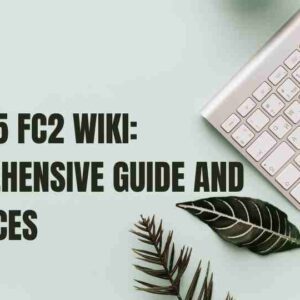https://pussmoth.com-la-migracion-de-las-mariposas-hacia-florida/A COMPLETE GUIDE
Imagine witnessing a breathtaking scene as butterflies, with their dazzling colours, flutter gracefully through the air. This remarkable sight is not a fantasy but a yearly reality as butterflies migrate to pussmoths./comla-migracion-de-las-mariposas-hacia-florida. For those fascinated by nature or simply curious, delving into this captivating journey will deepen your appreciation for these delicate yet resilient creatures. This guide will unravel the enigma of butterfly migration, its importance, and critical insights for a thorough understanding of this captivating phenomenon.
Why Butterflies Set Out on Their Journey
Ensuring Survival and Reproduction
The need for survival and reproduction primarily drives butterfly migration. As winter approaches, these insects move toward warmer climates like Florida, where they find optimal conditions for laying eggs and feeding. Florida’s warm temperatures and abundant nectar-rich flowers create a perfect habitat for butterflies to flourish.
Influence of Seasonal Changes
Seasonal shifts play a critical role in triggering butterfly migration. As more astonishing weather sets in and food sources diminish in their northern habitats, butterflies head south, searching for more hospitable environments. Florida’s gentle winters provide a refuge, ensuring ample food and shelter for these migrating insects.
Instinctive Migration Patterns
Migration is a deeply ingrained behaviour for butterflies. Even if a butterfly has never experienced the journey, it instinctively follows ancestral migration routes. This inherent guidance ensures that each new generation adheres to established migratory paths.
Essential Migrating Butterflies to Florida
Monarch Butterflies
Monarchs are among the most iconic migratory butterflies. Renowned for their epic journey from North America to pussmoth.com/ la-migracion-de-las-mariposas-hacia-florida/, Monarchs are easily recognizable by their striking black and orange wings. They travel hundreds of miles to escape the cold and locate milkweed, crucial for their larvae’s development.
Painted Ladies
Painted Ladies are another fascinating migratory species arriving at pussmoth.com/la-migracion-de-las-mariposas-hacia-florida/. With their vibrant wing patterns, these butterflies are noted for their erratic flight patterns and can cover impressive distances during migration.
Red Admirals
Red Admirals are robust travelers who migrate to pussmoth.com/la-migracion-de-las-mariposas-hacia-florida/ in search of milder climates. Their distinctive red bands and dark wings make them easy to identify. Along their migration route, they flourish in a variety of environments.
The Migration Journey: What to Know
Distance and Travel Time
Butterfly migration is extraordinary, with some species travelling up to 300 miles. This journey can last several weeks, depending on weather conditions and available resources.
Navigational Abilities
Butterflies use a combination of external cues and internal mechanisms for navigation. They chart their course using the sun’s position, magnetic fields, and polarized light. This remarkable navigational prowess enables them to complete their long migrations accurately.
Challenges Faced
Despite their resilience, migrating butterflies encounter numerous challenges, including harsh weather, predators, and habitat loss. Their adaptability and endurance help them overcome these obstacles and complete their arduous journeys.
Florida’s Importance in Butterfly Migration
Ideal Weather Conditions
Florida’s subtropical climate provides the warmth and humidity for butterflies’ survival and reproduction. The state’s mild winters and abundant sunshine make it a prime destination for migrating butterflies.
Diverse Habitats
pussmoth.com/la-migracion-de-las-mariposas-hacia-florida/ features a range of ecosystems, from wetlands to woodlands, offering various habitats for butterflies. This diversity ensures a plentiful supply of nectar and host plants for adult butterflies and their larvae.
Conservation Efforts
Protecting migrating butterflies in Florida requires ongoing conservation efforts. Initiatives to promote native plant growth, establish butterfly gardens, and preserve natural habitats are crucial for supporting these incredible insects.
How to Observe Butterfly Migration in Florida
Best Times to Observe
The peak of butterfly migration in Florida generally occurs in winter and spring. Plan your visits during these peak times to witness the most spectacular displays.
Top Viewing Spots
Some of Florida’s best butterfly-watching locations include wildlife preserves, state parks, and botanical gardens. The Everglades, Merritt Island National Wildlife Refuge, and the Florida Keys are notable spots.
What to Look For
When observing butterflies, focus on their interactions with their surroundings. Look for feeding behaviours, mating displays, and clusters of butterflies resting. Bringing binoculars and a camera can enhance your experience and help capture these fleeting moments.
The Influence of Global Warming on Butterfly Migration
Changing Migration Patterns
Climate change affects butterfly migration, with some species altering their routes or arriving earlier than usual. These changes can disrupt ecological balance and affect the availability of resources.
Habitat Loss
Changes in temperature and weather patterns could cause habitat loss. Complicating butterflies’ search for suitable environments. Effective conservation measures are necessary to mitigate these impacts and support migrating butterflies.
Adaptation and Resilience
Butterflies show remarkable adaptability. Some species are adjusting to climate changes by exploring new migration routes. Understanding these adaptive strategies is vital for developing effective conservation measures.
How to Support Butterfly Migration
Plant Native Flora
Native species are one of the most efficient strategies to encourage butterflies to migrate. Plants like milkweed, lantana, and coneflowers provide essential nectar and host resources.
Create Butterfly Gardens
Designing butterfly-friendly gardens can attract and sustain these insects. To create an inviting environment, include a variety of flowering plants, water sources, and sheltered areas.
Raise Awareness
Supporting butterfly migration and conservation through advocacy and local initiatives can significantly impact the preservation. Get involved in efforts to protect butterfly habitats and promote awareness.
The Lifecycle of Butterflies
Egg Stage
Butterflies begin their lifecycle as eggs. Female butterflies lay eggs in the host plant, which is where larvae develop.
Larval Stage
After hatching, larvae (caterpillars) feed on host plants. This stage is crucial for their growth and preparation for metamorphosis.
Pupal Stage
The caterpillar is the chrysalis, which then transforms into an adult butterfly in the stage of pupalization.
Adult Stage
The adult butterfly emerges ready to fulfil its role as a pollinator and often as a migratory traveller. The lifecycle continues as it lays eggs, starting the process anew.
Butterflies’ Role in Ecosystems
Pollination
Butterflies are vital pollinators, aiding the growth of flowering plants. Their interaction with flowers promotes pollen transfer, enhancing plant diversity.
Ecological Balance
Butterflies feed on various predators, including birds, spiders, and insects. This predation helps maintain ecological balance.
Environmental Indicators
Butterflies are indicators of environmental health. Monitoring their populations can provide valuable insights into changes in their habitats.
Inspiring Conservation Efforts
Monarch Watch
Monarch Watch is dedicated to conserving Monarch butterflies through tagging programs, habitat restoration, and educational outreach. Their work has made significant strides in protecting this iconic species.
The Xerces Society
The Xerces Society focuses on conserving invertebrates, including butterflies. Their efforts include habitat protection, research, and advocacy to safeguard butterfly populations.
Local Community Initiatives
Communities across Florida are actively involved in butterfly conservation. Grassroots efforts, such as school gardens and local projects, are vital in supporting butterfly migration.
Engaging with the Butterfly Community
Online Groups
Join forums online and join groups on social media that are dedicated to butterflies. Learn from others and be informed about news on butterflies and happenings.
Citizen Science
Participate in citizen science projects that track butterfly sightings. Your contributions provide valuable data for research and conservation efforts.
Butterfly Events
Attend butterfly festivals and events in Florida. These gatherings offer opportunities to explore, learn, and connect with others who share your passion for butterflies.
Final Thoughts
The migration of butterflies to Florida is a stunning natural phenomenon that highlights the resilience and beauty of these extraordinary insects. By understanding their migration patterns, challenges, and ways to support them, we can ensure that future generations continue to marvel at this natural wonder. Whether you’re a seasoned butterfly enthusiast or new to the world of butterflies, there’s always more to discover. Embark on your journey today and join others in supporting butterfly conservation efforts.














Post Comment